Dr. Philip Schoenfeld of RENU Artful Medicine is a top Washington D.C. facial plastic surgeon who specializes in BOTOX injections for both cosmetic and medical purposes. BOTOX® is best known as a wrinkle treatment, temporarily relaxing “dynamic” wrinkles caused by repetitive facial movements over time.
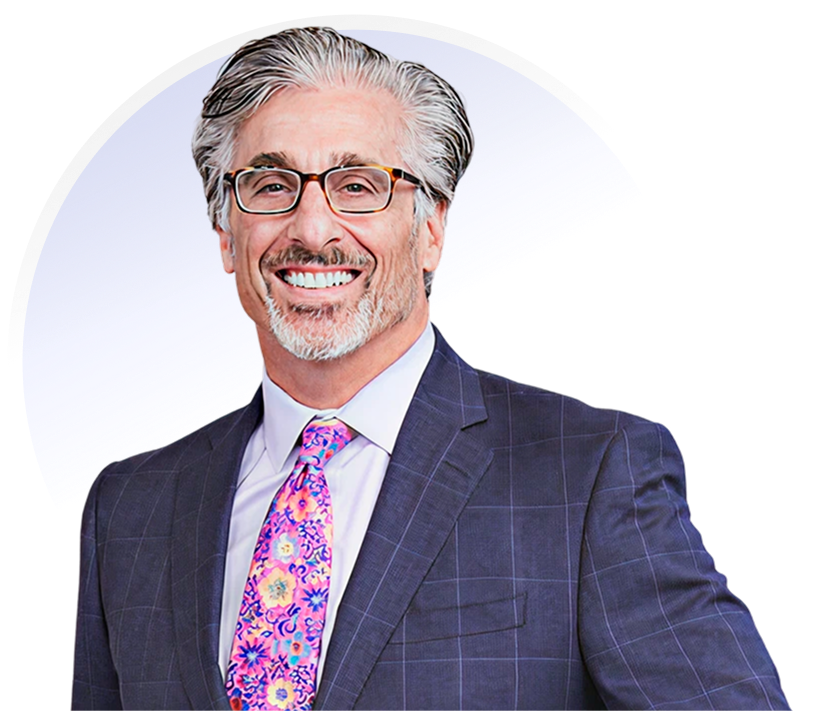





















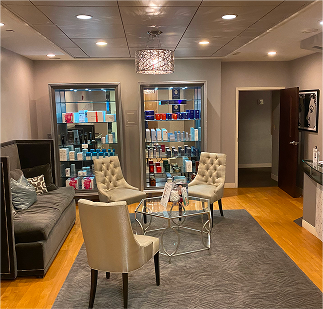

To prolong a youthful appearance and display a more energetic look, Renu Artful Medicine offers patients an array of surgical and non-surgical eye rejuvenation procedures. One of the most transformative surgeries is blepharoplasty, commonly called eyelid lift surgery, performed by Dr. Philip Schoenfeld of the Washington, D.C. suburb, Chevy Chase, MD.


Trustindex verifies that the original source of the review is Google. Greatly improved my quality of life. Dr. Schoenfeld was very knowledgeable and answered all my questions. I would trust him to perform this surgery again.Trustindex verifies that the original source of the review is Google. Dr. Schoenfeld is amazing. I’ve seen him for both cosmetic and sinus related reasons and he is truly the best - I can breathe better than I ever have. so glad I found him! thank you, Dr. Schoenfeld.Trustindex verifies that the original source of the review is Google. Upon meeting Dr. Schoenfeld, I immediately knew I was in good hands. He was incredibly informative, respectful, and receptive to my requests and concerns. I felt entirely prepared for my operation and healing process. He and his team frequently checked in pre-op and post-op to ensure my comfort, safety, and satisfaction. Almost 2 months post-op, my health and confidence has significantly improved. My recovery was incredibly smooth and rapid to the extent that I feel as though I never even had surgery. He absolutely exceeded my expectations without any surprises and executed on every promise he made. I am so grateful for Dr. Schoenfeld and strongly recommend him and his team!Trustindex verifies that the original source of the review is Google. Terrific experience - wonderful facial by a lovely and talented anesthetist.Trustindex verifies that the original source of the review is Google. I haven't left a review for anybody but I am doing this for Dr. Philip Schoenfeld to express my appreciation for the exceptional care I received after fracturing my nose during martial arts training. The injury was quite severe, leaving my nose crooked and significantly impacting my breathing. Dr. Schoenfeld assessed my situation promptly and recommended surgery to restore my normal breathing. Getting an appointment within the same week was also incredibly helpful. The surgery was a complete success, and I am so pleased with how my nose looks. What has surprised me most is the significant improvement in my breathing - I can breathe more easily now than I ever have before! Thank you so much for your astonishing work.Trustindex verifies that the original source of the review is Google. Dr. Shoenfeld is fabulous! Very detailed and listens to what the patient wants/needs. I’d give more than 5 stars if I had the option!Trustindex verifies that the original source of the review is Google. 2025 - I’ve been going to Dr. Schoenfeld since 2023, and I truly can’t imagine trusting anyone else with my face. I recently came back for cheek filler, lip filler, and a little liquid rhinoplasty to refine the tip of my nose —and I’m completely obsessed with the results. As someone who’s normally terrified of needles, Dr. Schoenfeld makes me feel so comfortable and at ease every single time. His technique is gentle, his eye for detail is unmatched, and he really listens to what you want. His entire office staff and front desk team are incredibly kind and accommodating, which makes the whole experience even better. I can’t recommend him enough! 2024 - Update after rhinoplasty - Saw Dr. Schoenfeld for lip filler & cheek filler. I am absolutely obsessed with the results and can see the difference immediately after. His front desk team is so kind and polite - they made scheduling a super easy and convenient process again. Filler was practically painless. 10/10 experience. I will definitely be coming back!! 2023 - Dr. Schoenfeld is incredible. I had an amazing experience and highly recommend him for all rhinoplasty patients. I went to him for a septoplasty and ethnic rhinoplasty. The procedure itself was painless and downtime was minimal. His team was able to fit me in within weeks for the procedure and follow-up appointments— super easy scheduling and consultation process. I definitely saw a noticeable difference after the procedure. The results are fantastic and everything I could wish for!!! Dr. Schoenfeld addressed all of my concerns and made me feel super confident and supported throughout the entire process— terrific bedside manner.Trustindex verifies that the original source of the review is Google. I was recommended to Dr. Schoenfeld by an EMT doctor after a second broken nose. I needed a septoplasty/ rhinoplasty. I googled a few other surgeons after, but after having met Dr. Schoenfeld, I knew I was in the right hands — physically and emotionally! His work speaks volumes, but the concern and understanding he brings to his patients’ desired outcome is quite reassuring. After my procedure, I’ve had a few concerns after accidental head bumps (3 yr old!), and his office staff was wonderful and helpful to squeeze me in asap (thanks Ana! (Sp?)). I wholeheartedly would advise considering Dr. Schoenfeld for any ENT needs. Wonderful person, incredible surgeon, amazing staff.Trustindex verifies that the original source of the review is Google. I cannot rave about Dr. Schoenfeld enough. I had a rhinoplasty and septoplasty done 12 years ago with him and it has stood the test of time. Matter of fact, I just saw him today and he even mentioned how amazing my results were after all of this time. Most people don't even know I've had any work done and I believe that is the true testament to Dr. Schoenfeld's artistry. He listens to your concerns, makes his expert recommendations, and follows through with amazing work. He also doesn't push anything on you and will actually tell you if something needs to be done or not. I highly recommend Dr. Schoenfeld and hope that he can bring an improvement to your life as he has done mine.Verified by TrustindexTrustindex verified badge is the Universal Symbol of Trust. Only the greatest companies can get the verified badge who has a review score above 4.5, based on customer reviews over the past 12 months. Read more

The bacteria Clostridium botulinum produces a neurotoxin, which is then purified to create BOTOX injections. The neurotoxin is known as botulinum toxin, which is how “BOTOX®” got its name. Research dates back to the 1920s, though medical injections were first discovered decades later as a treatment for crossed eyes and uncontrollable eye twitching. Some patients noticed aesthetic benefits following the treatment, which led to the development of BOTOX Cosmetic.
These neurotoxin injections were FDA-approved in 2002 for the cosmetic treatment of the glabellar lines (frown lines) that form between the eyebrows, and in 2013 for crow’s feet at the outer corners of the eyes. Throughout the years, there have been additional approvals for various medical uses, including involuntary contraction of the neck muscles (cervical dystonia), excessive sweating, migraines, lip twitching, and urinary incontinence.
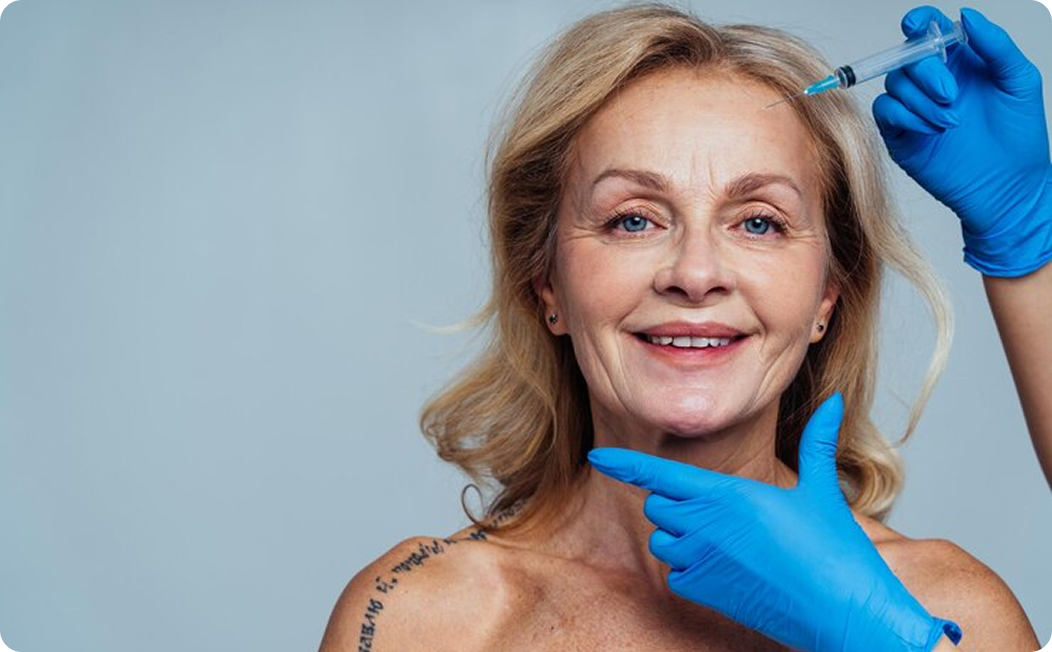
When expertly injected into specific muscles, BOTOX prevents nerve signals from reaching muscles that cause contractions. Without these contractions, the muscle movements that form wrinkles do not occur. The effects typically last about 4 months.
Try as we might, the progression of facial aging is unavoidable due to a number of factors including genetic tendencies, sun exposure, and lifestyle habits like drinking and smoking. Repetitive movements like smiling and frowning, along with aging skin, cause lines and wrinkles to form on areas like the face, neck, hands, and other parts of the body.
Patients often tell Dr. Schoenfeld that they look much older than they feel and want their appearance to reflect their energy level. Wrinkles form when structural components of the skin, including collagen and elastin, are damaged or produced at a slower rate.
The total cost of your Botox treatment depends on your individual needs, goals, and treatment plan. While your total Botox price may vary, here are some things to consider.
At Renu by Dr. Schoenfeld, we know that no two patients are alike and tailor each patient’s treatment plan to their unique needs. We can give you an accurate estimate after your individual consultation.

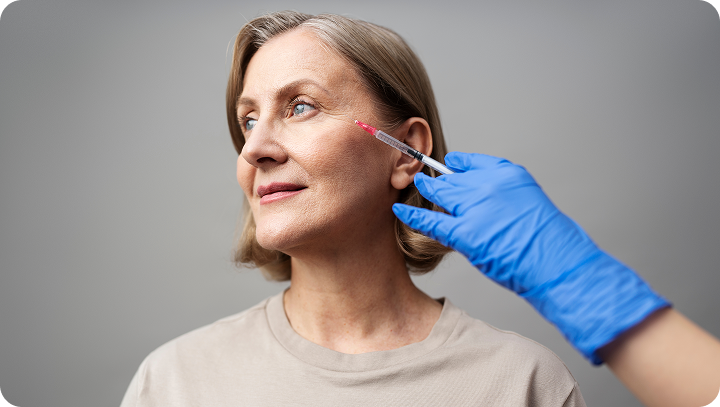
Like BOTOX®, Dysport is an FDA-approved injectable that is produced from botulinum toxin type A but is manufactured by Medicis. Dysport is intended to treat dynamic wrinkles and will begin working within 5 days, displaying maximum benefits around the 10-day mark. In most cases, Dysport injections last about 4 months.
Doctors have treated their patients with this brand of injectable in Europe for years, and extensive studies have shown excellent cosmetic results as well as the assurance of safety. If diluted at a different ratio, the benefits of Dysport might not last as long as BOTOX treatments.
Because it is composed of a smaller molecule, Dysport has a greater tendency to diffuse slightly in surrounding tissues, which can be used to the patient’s advantage when treating certain areas of the face. It may also be more advantageous for men, who tend to have larger facial muscles.
Dysport is excellent for improving frown lines, glabellar lines (on the forehead between the eyebrows), and crow’s feet. It is also approved for several medical uses. Some patients who develop an immunity to BOTOX over time may find that Dysport is a good alternative..
Made by Merz Pharmaceuticals, Xeomin, too is created from botulinum toxin type A. There are no additives in the formula, which makes the treatment ideal for those with certain sensitivities. The formula does not require refrigeration, so injections may be more comfortable. Xeomin is FDA-approved for blepharospasm, cervical dystonia, and glabellar lines.
Usually, the effects and costs of each of the three options are similar. Patients can undergo a different type of injection at different times during their treatment plan to determine their preference.
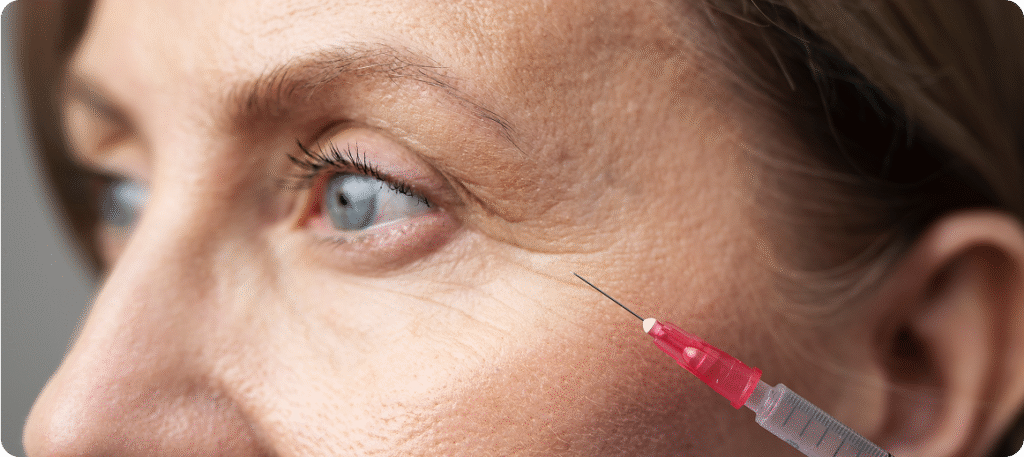
Both injections can successfully treat dynamic wrinkles caused by repetitive muscle movement in both men and women. Patients in overall good health who are seeking to improve early to moderate signs of aging may be good candidates for the injections.
Injectables are safe for all skin types and ethnicities. Ideally, patients will have a good understanding of the treatment process and have reasonable expectations for their results. The best results typically occur when fine to moderate wrinkles are treated.
BOTOX® is generally the more popular treatment option, but Dysport may be better for larger areas of the face or for those with stronger muscles. Male patients might prefer Dysport injections for these reasons. The smaller molecules can diffuse to a larger area than BOTOX, and fewer injections or a less potent concentration of the product may be used.
Dr. Schoenfeld can recommend BOTOX® or Dysport based on the patient’s goals and his knowledge of the different products.
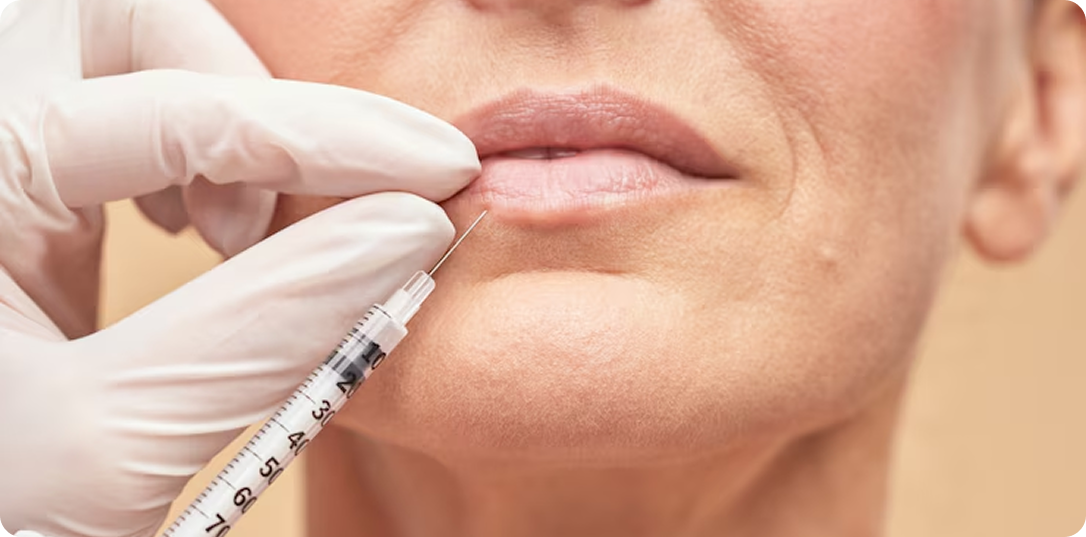
Both BOTOX® and Dysport are brand names for the safe and effective neurotoxin that creates a mild muscle paralysis for either cosmetic or medical purposes. Following treatment, patients can expect a smoother, younger-looking face. BOTOX® and Dysport are not effective for issues treating issues like skin laxity or areas of diminished fat, however.
Injectable fillers are used to add volume to areas that have experienced collagen loss and fat migration. Fillers are composed of different materials, including those which occur naturally in the human body, such as fat, hyaluronic acid, or calcium hydroxylapatite, or biocompatible synthetics like polyalkylimide, poly-l-lactic acid, or Polymethyl-methacrylate microspheres. Dr. Schoenfeld offers the following injectable fillers at his Washington DC clinic:
BOTOX Cosmetic is one of the most popular non-invasive wrinkle treatments on the market. It has a decades-long track record of safety and effectiveness and helps patients look and feel younger by smoothing away dynamic wrinkles for months at a time.
Botulinum toxin injections can also be used to treat vertical bands of the neck (platysmal bands) that become more prominent with age, as well as excessive sweating, medically known as hyperhidrosis. The appeal of this treatment is the wide array of conditions it can correct.
Since BOTOX® and Dysport are administered during a simple injection session, patients can get back to their normal schedules right away. A recovery period is not necessary following an appointment, making the treatment ideal for busy individuals who do not wish to undergo plastic surgery.
BOTOX® Cosmetic injections are also less expensive than many other anti-aging medical treatments and can be maintained for as long as the patient wishes to continue treatment.
Before Dr. Schoenfeld sees a patient for BOTOX® treatments, he will first meet with them for a doctor-patient consultation at RENU Artful Medicine. He will perform an examination of the areas to be treated, including both the skin and surrounding features. He will also review the prospective patient’s medical history and ensure that he is aware of any allergies the patient may have. The doctor will explain the treatment in-depth, including any inherent risks, and answer any questions that may arise during this time.
In addition to BOTOX, Dr. Schoenfeld may suggest medical-grade skincare or discuss a regimen that consists of at-home skincare as well as non-surgical and surgical procedures at his Chevy Chase, MD practice. Each treatment plan is customized to meet the patient’s unique needs.
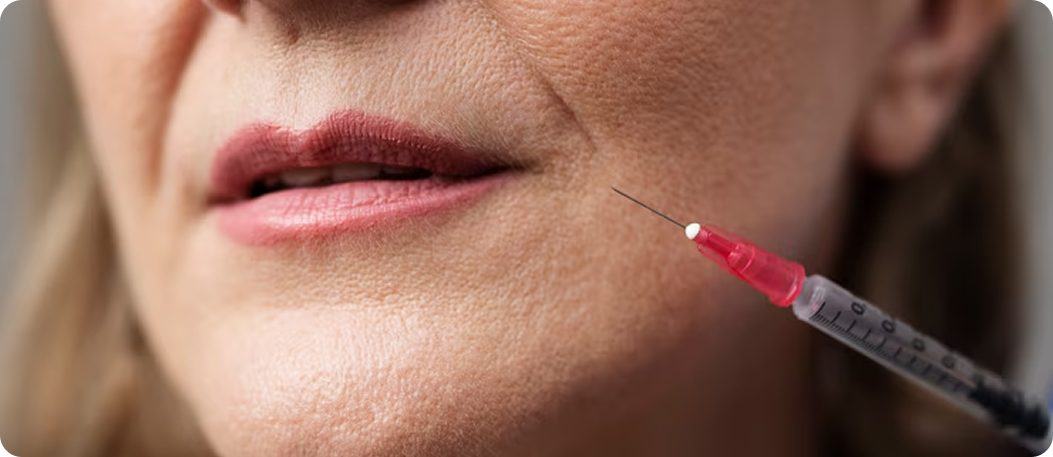

It is recommended that patients follow the timeline below for best results.
7 days prior:
Discontinue over-the-counter medications that thin the blood and can cause more post-injection bruising – aspirin, ibuprofen, naproxen, and St. John’s wort. Some doctors also recommend eliminating oil supplements like vitamin E and fish oil.
3 days prior:
Avoid smoking and drinking in the days leading up to the appointment.
2 days prior:
Patients can take arnica supplements sublingually (under the tongue) or apply it topically if instructed by Dr. Schoenfeld to reduce bruising.
The day of injection:
Patients should cleanse their skin as instructed and remove any makeup.
BOTOX® treatment sessions typically take less than half an hour to perform, depending on the patient’s needs. Because the needle used is very small, the trained practitioner does not typically need to prep the skin with ice or a topical numbing solution. Pressure or a slight pinch may accompany each injection but should not create long-term discomfort.
The treatment plan may be sketched on the face with a special marker to ensure each requested area is treated. Next, the practitioner may ask the patient to smile or frown to see how the face moves with each expression. These measures create the most precise target-treatment of facial lines. The effects of BOTOX® injections typically last up to six months (3-4 months on average), so injections must be repeated regularly to maintain the results.
BOTOX® injections can rejuvenate the face as a standalone procedure, but they may also be combined with other facial cosmetic treatments for enhanced results. The treatments are often combined with dermal fillers like Juvederm, or Restylane to treat static wrinkles (which are caused by collagen and volume loss).
While BOTOX Cosmetic injections provide a more conservative treatment option than facial plastic surgery, some patients opt to undergo a surgical procedure such as blepharoplasty (eyelid lift) or neck lift to address more extensive signs of aging. Other areas of the face can then be treated with these injections to provide enhanced results.
Other complementary improvements are plump lips, which can be obtained through Juvederm Volbella injections, or a more defined chin and jawline, achieved with chin augmentation. These can be combined with your cosmetic injections.
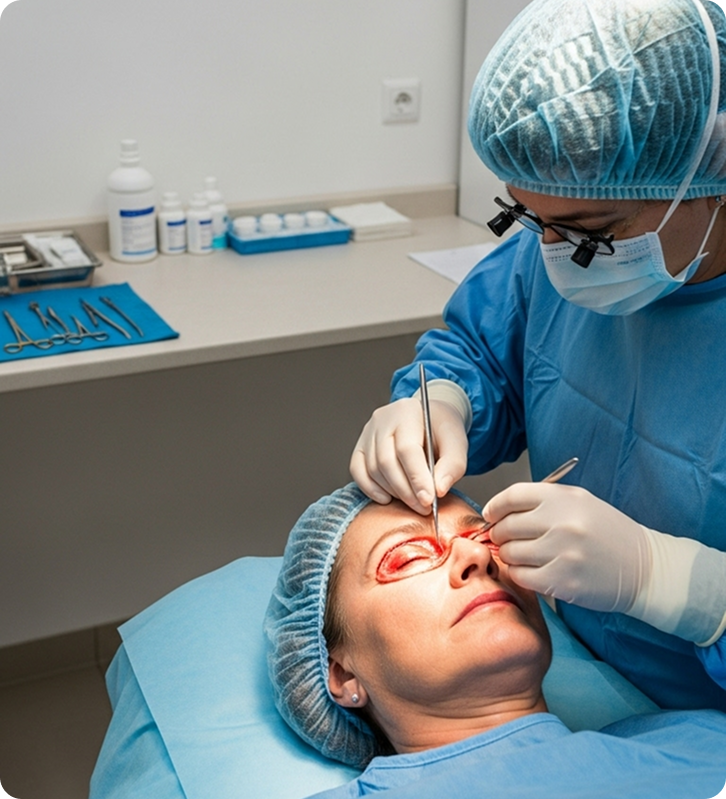
Dr. Schoenfeld knows his patients are eager to return to their regular schedules after surgery, and he can recommend different things to promote faster healing. The doctor recommends that prior to surgery patients temporarily discontinue the use of vitamins and natural remedies as they can lead to increased bleeding and bruising of the face following blepharoplasty. Before the doctor begins the surgery, he administers epinephrine to prevent blood flow during surgical injections of the eyelid and face, which decreases intraoperative bleeding. Directly following blepharoplasty, Dr. Schoenfeld applies Arnica gel topically to reduce pain and inflammation, and he encourages patients to ice the affected area immediately. Even with these precautions, bruising will likely occur. Photorejuvenation (light laser) treatment can expedite the resolution of bruising postoperatively. Additionally, patients can use makeup to cover the bruising one week after blepharoplasty. Click here to learn more details about recovery and side effects of Eyelid surgery.
If you live near Chevy Chase, MD, RENU by Dr. Schoenfeld offers blepharoplasty among its services and is conveniently located at 5454 Wisconsin Ave #1625, Chevy Chase, MD 20815.
Lower eyelid surgery can treat hollowness in the lower eyelids through various methods. The doctor can administer in-office injections of fillers such as Restylane or Juvederm to restore volume to the lower eyelids. Lower blepharoplasty with fat removal and repositioning is another way to treat this aesthetic concern. Lower eyelid surgery results last longer than filler injections to the lower lids, and the results are often more aesthetically pleasing. While fat injections to the lower eyelids can be performed, this method may lead to an uneven texture and irregularities of the area as the under eye skin is very thin.
Excess skin or eyebrow ptosis (lowered brows) may result in the hidden appearance of the upper eyelids. Blepharoplasty can treat extra eyelid skin, while brow lift can adjust the position of the forehead and lift the eyebrows. A thorough physical examination of the eyelids will allow the doctor to determine which surgery is most appropriate for a patient. During the surgical consult, each option can be explored in depth.
Philip S. Schoenfeld, M.D., F.A.C.S.
Dr. Schoenfeld, the founder and Medical Director of Renu facial plastics of Chevy Chase, MD, is double board certified in Otolaryngology/Head and Neck Surgery and Facial Plastic and Reconstructive Surgery. The doctor has been practicing facial plastic and reconstructive surgery for nearly two decades. An Army veteran, Dr. Schoenfeld completed his residency training at the internationally known Walter Reed Army Medical Center.
Aside from his duties as a cosmetic surgeon, the doctor works with trauma patients, has involvement in philanthropic work, and teaches upcoming practitioners about the art of facial plastics. Schedule a personalized visit with him today by calling 301-652-RENU (7368), or filling out his Patient Contact Form.
As a highly experienced double board certified plastic surgeon, I have dedicated my career to providing my patients with the best possible outcomes. I’ve specialized in facial plastic, reconstructive and cosmetic surgery in Washington DC and Maryland since 1998. My training and experience have given me a deep understanding of the anatomy of the face and body, and I use this knowledge to develop customized treatment plans for each of my patients.
I am committed to staying up to date with the latest advances in plastic surgery, and I use state-of-the-art technology and techniques to deliver the best results. I take a personalized approach to care, taking the time to understand each patient’s individual needs and goals.
When you choose me as your plastic surgeon, you can trust that you will receive the highest quality care and attention. I am dedicated to helping my patients achieve their desired results, and I will work with you every step of the way to ensure your complete satisfaction.
Here is what separates Dr. Schoenfeld from other surgeons in the DMV area: